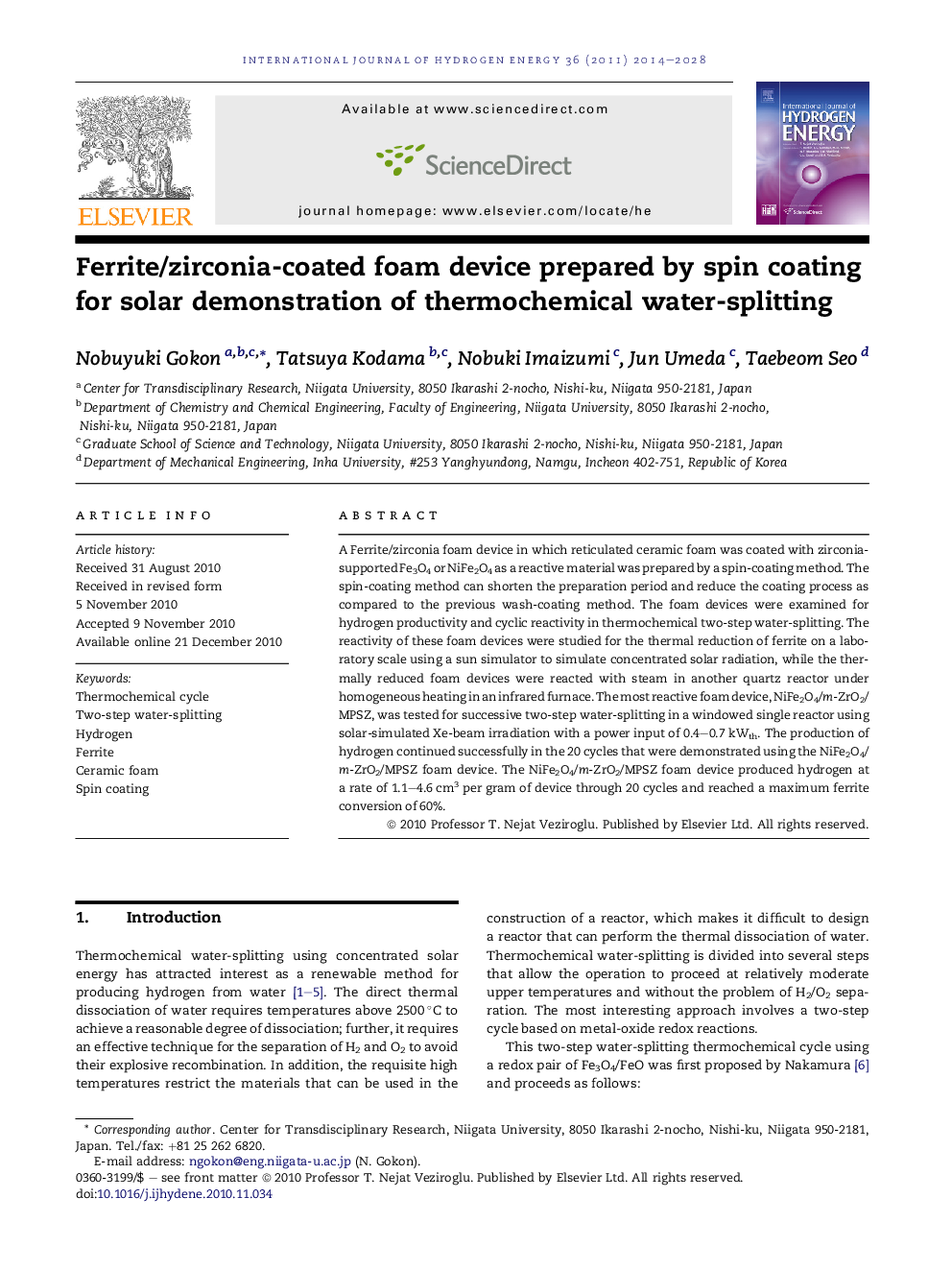| Article ID | Journal | Published Year | Pages | File Type |
|---|---|---|---|---|
| 7724347 | International Journal of Hydrogen Energy | 2014 | 15 Pages |
Abstract
A Ferrite/zirconia foam device in which reticulated ceramic foam was coated with zirconia-supported Fe3O4 or NiFe2O4 as a reactive material was prepared by a spin-coating method. The spin-coating method can shorten the preparation period and reduce the coating process as compared to the previous wash-coating method. The foam devices were examined for hydrogen productivity and cyclic reactivity in thermochemical two-step water-splitting. The reactivity of these foam devices were studied for the thermal reduction of ferrite on a laboratory scale using a sun simulator to simulate concentrated solar radiation, while the thermally reduced foam devices were reacted with steam in another quartz reactor under homogeneous heating in an infrared furnace. The most reactive foam device, NiFe2O4/m-ZrO2/MPSZ, was tested for successive two-step water-splitting in a windowed single reactor using solar-simulated Xe-beam irradiation with a power input of 0.4-0.7Â kWth. The production of hydrogen continued successfully in the 20 cycles that were demonstrated using the NiFe2O4/m-ZrO2/MPSZ foam device. The NiFe2O4/m-ZrO2/MPSZ foam device produced hydrogen at a rate of 1.1-4.6Â cm3 per gram of device through 20 cycles and reached a maximum ferrite conversion of 60%.
Related Topics
Physical Sciences and Engineering
Chemistry
Electrochemistry
Authors
Nobuyuki Gokon, Tatsuya Kodama, Nobuki Imaizumi, Jun Umeda, Taebeom Seo,
